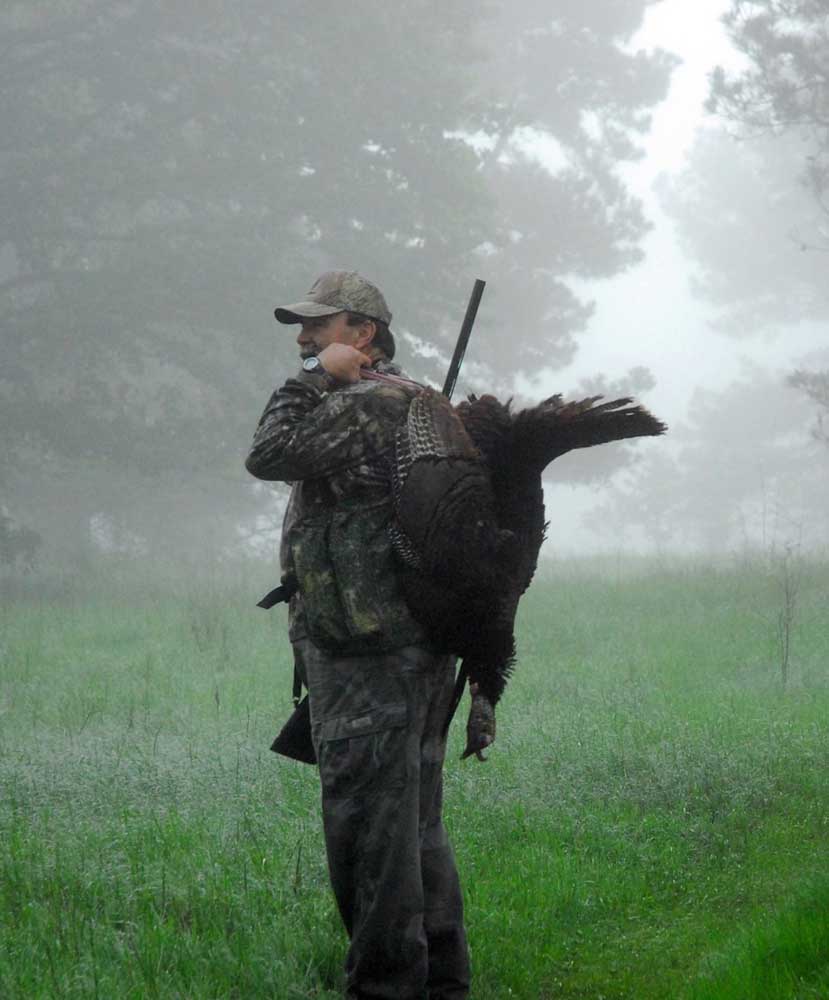Slow Go: Eastern Turkeys still are not flying off the roost in big numbers
Published 11:26 pm Thursday, March 30, 2023

- Although there is a spring turkey season for Eastern wild turkeys in 12 counties, efforts to restock the birds have not expanded enough for more hunting opportunity.
It turns out that returning wild turkeys to the woods of East Texas is not going to be a sprint. It has become a marathon with the finish line still a long way in the distance.
Since beginning its block stocking restoration program in 2014, Texas Parks and Wildlife Department has released more than 1,100 Eastern wild turkeys, including 71 this winter across 10 counties. During research leading up to this restoration attempt, the department also stocked three additional counties.
Trending
So far the birds are more than hanging on, but the numbers are not exactly growing exponentially as was hoped.
“I don’t think we have anything exploding. If you think about the historic work across the Southeast, they were stocked and they had a season in five years. We don’t have anything like that,” said Jason Hardin, TPWD turkey program leader.
East Texas was once full of wild turkeys, but between colonization and the growth of the timber industry in the late 1800s, early 1900s, market hunting and an early limit of 25 birds per day, the turkeys began disappearing at the beginning of the 20th century. By the late 1930s the birds were non-existent and the season was officially closed in 1941.
TPWD began efforts to bring the birds back during a restocking program from 1979-2003 in which about 7,000 birds were released in 58 counties. In some cases the effort took and the department was able to open a spring season. However, at its peak only 400 birds were harvested when a season was open in 43 counties in 2005.
While the number of birds released was ample, biologists learned that the method of releasing just 15 birds per site with sites not necessarily within proximity of others lead to the lack of success. With each stocking consisting of basically 12 hens and three toms, any substantial loss led most likely to failure.
In the latest stocking effort, the birds are being released with as many as 60 birds, 20 toms and 40 hens, per site. Also sites are chosen based not only on habitat quality, but also distance to other releases so that as the birds expand their range, they can overlap other populations.
Trending
The problem now has become finding enough birds to maintain stocking momentum.
“There are so many states with regulation changes or that are doing research, it is hard to find them out there,” Hardin said.
He said he easily has enough sites evaluated where he could release more than 200 birds annually, but as Eastern turkey populations throughout the Southeast decline, states are hesitant to reel back hunter limits at the same time they are shipping birds to Texas. This has meant the department has had to reach out more to Northern and Northeast states where populations are stable or growing, but winter trapping efforts can be difficult.
Because of the mobile nature of the birds and their willingness to roost nightly in the closest tree, along with the thickness of the cover in East Texas, it is difficult to know exactly how the stockings are faring. One exception is in Franklin County where vigilant landowners continue to report seeing increasing numbers.
This year’s stockings finished a site along the Angelina River on the Angelina/Jasper county lines and started a new effort along the Sulphur River in Hopkins County. In all, block stockings have been done in Anderson, Angelina, Camp, Cherokee, Franklin, Henderson, Hopkins, Rusk, Titus and Trinity counties. Houston, Montgomery and Nacogdoches counties were stocked during the research phase leading up to the block stockings.
Hardin said he is not certain why the block-stocking efforts are not growing faster. He said some of the issues may be the timing of the release or that the habitat at the time of the release is not meeting the birds’ needs, or that having to import them from throughout the country instead of the next county could be having an impact.
As long as the department can find partners in other states willing to provide the birds, the stocking program will continue. However, Hardin said he is going to quit evaluating properties for now until he is able to catch up on stockings at sites already approved.
The goal is still to open a season in the newly stocked counties. While there is still an East Texas season in 12 counties stocked during the original release efforts, Hardin said countywide openings in the newer counties will probably not happen anytime soon.
What hunters could see first is a permit program similar to what is used for bighorn sheep in the Trans Pecos or pronghorns in the Texas Panhandle. Although restrictive because in most cases the permits would be controlled by the landowner who could use them personally or opt to sell to the public, the positive side is that it would allow the department to gather more information on areas hunted, number of birds seen, harvested and more.
This spring’s season, running April 22-May 14, is open in Bowie, Cass, Fannin, Grayson, Jasper, Lamar, Marion, Nacogdoches, Newton, Polk, Red River and Sabine counties.






